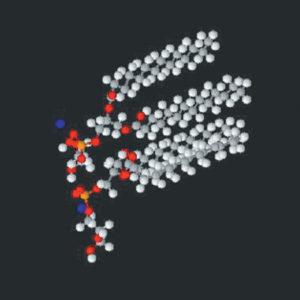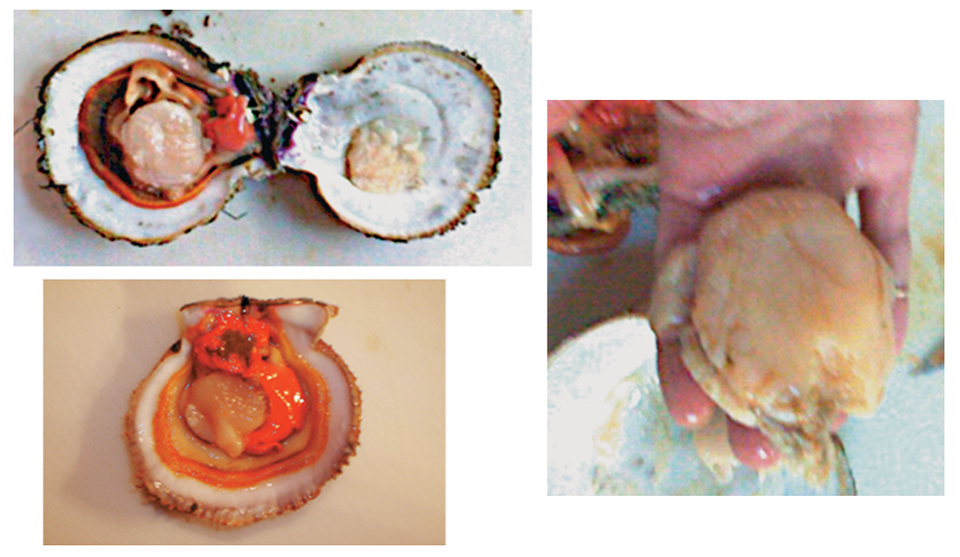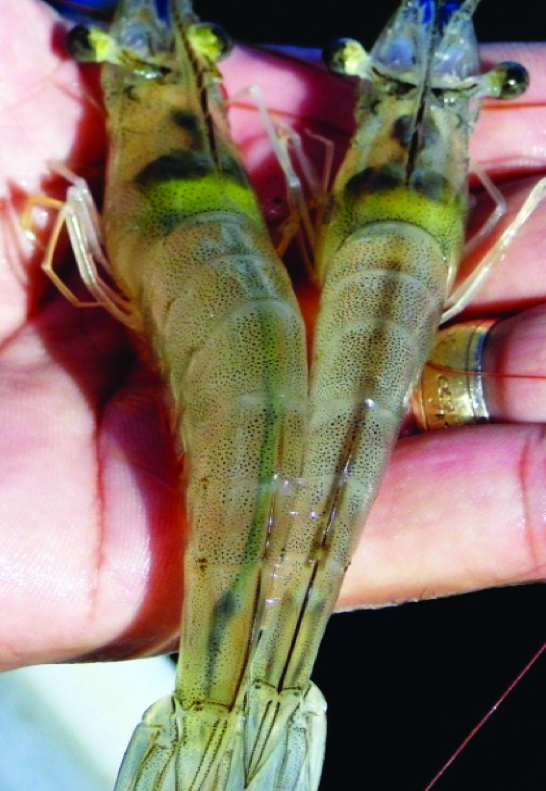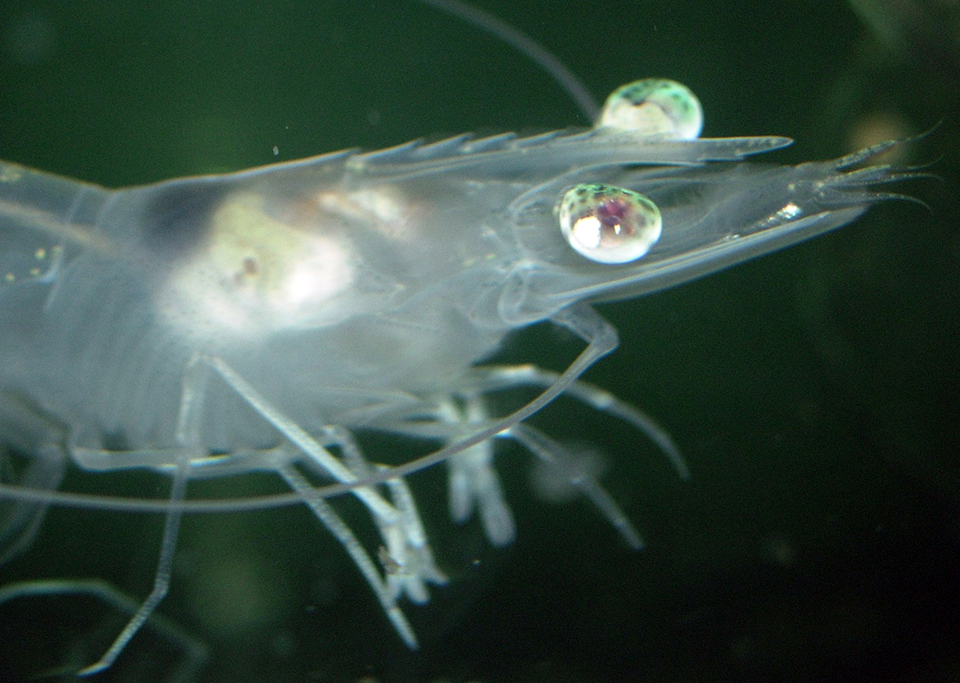Authors develop a diet specifically formulated for desert regions

Phospholipids comprise a group of polar lipids with glycerol-3-phosphate as backbones. As major components of cell membranes, phospholipids play important roles in maintaining normal cell structure and functions and are sources of second messengers in cell signaling. Phospholipids also participate in lipid metabolism and serve as emulsifiers, facilitating neutral lipid digestion and absorption.
Shrimp are capable of synthesizing phospholipids, but this synthesis generally cannot meet their metabolic requirements, particularly during their earlier growth stages. Thus, phospholipids are considered essential nutrients for shrimp.
In the past two decades, the essential nature of dietary phospholipids has been demonstrated for various shrimp species. Reported dietary phospholipid requirements range widely at 1 to 6.5 percent, depending on species, animal life stage, dietary composition and the source and purity of phospholipids used (Table 1).
Understanding of the functions and metabolism of phospholipids is mostly based on knowledge from mammalian and fish research. Research concerning phospholipids in shrimp nutrition is still rare, yet some progress has been made in recent several years.
Gong, Dietary phospholipid requirements, Table 1
| Species | Stage | Level | Postlarvae Source | Reference |
|---|---|---|---|---|
| F. chinensis | juvenile | 2% | SL | Kanazawa, 1993 |
| F. merguiensis | juvenile | 1-2% | SL | Thongrod and Boonyaratpalin, 1998 |
| F. penicillatus | juvenile | 1.25% | PC | Chen and Jenn, 1991 |
| L. vannamei | postlarvae | 6.5% | SL | Coutteau et al., 1996 |
| 1.5% | PC | |||
| juvenile | 3-5% | SL | Gong et al., 2000 | |
| M. japonicus | larvae | 3.5-6% | SL | Kanazawa et al., 1985 |
| Teshima et al., 1986 | ||||
| Camara et al., 1997 | ||||
| juvenile | 3% | SL | Teshima et al., 1986 | |
| P. monodon | postlarvae | 1.0% | SL | Piedad-Pascual, 1986 |
| juvenile | 1.25% | PC | Chen, 1993 |
SL = soybean lecithin, PC = phosphatidylcholine
Mediator for lipid metabolism
Shrimp contain low levels of lipids, with total lipids accounting for less than 2 percent of their body weight. In shrimp muscle, phospholipids represent more than 50 percent of total lipids. They function mainly for the formation of biomembranes when cells grow and replicate, rather than as an energy source.
There are almost no triglycerides in shrimp muscle tissue. In shrimp hepatopancreases – where most digestion and absorption take place, and enzymes and energy reserves are abundant – phospholipids rank as the second major lipid class next to triglycerides.
With dietary supplementation of phospholipids, total lipids in the shrimp hepatopancreas increase while shrimp muscle lipids decrease, indicating that phospholipids facilitate lipid usage in muscle and storage in the hepatopancreas.
Maintaining sufficient energy supplies in the hepatopancreas is very important for shrimp under extreme conditions such as frequent molting, low dissolved oxygen levels, or thermal stress, when normal feed intake may be interrupted. The mobilization and utilization of these lipid stores from the hepatopancreas can contribute to the improved performance of shrimp under stressful conditions.
In addition to synthesis, lipolysis and incorporation into cell membranes, phospholipids are also involved in the assembly of lipoproteins that are released to shrimp haemolymph for lipid transport. Among the lipoproteins that are not sex-specific, such as high-density lipoprotein, very high-density lipoprotein, and female-specific lipoproteins (vitellogenin), phospholipids have been identified as the dominant lipid moiety.
Since high-density lipoprotein seems to have dual functions in both shrimp defense systems and lipid transport, the question that remains is what roles phospholipids play in inducing such proteins. The topic deserves further research.
Facilitating cholesterol availability

Like phospholipids, cholesterol is also a component of biomembranes. It plays an important dual role in membrane fluidity, and is an effective source of precursors for steroid hormones for shrimp molting, growth, and reproduction.
Shrimp cannot synthesize cholesterol de novo from acetate and mevalonate, although they may have the ability to dealkylate some 28-carbon and 29-carbon sterols to cholesterol. Therefore, cholesterol is considered an essential nutrient for shrimp. Reported dietary requirements for cholesterol range from 0.12 to 2 percent of diet.
The nutritional relationship between phospholipids and cholesterol has been of great interest in shrimp culture for a long time. Dietary phospholipids enhance not only digestion, assimilation, emulsification, and absorption of cholesterol, but also its transport and mobilization.
Although it has been suggested that dietary phospholipids enhance cholesterol availability, experiments failed to prove this hypothesis until a 2000 study by the main author and coworkers demonstrated a highly significant interaction (P = 0.0001) between dietary phospholipids and cholesterol on the growth of Pacific white shrimp (Litopenaeus vannamei) juveniles. This study showed that as levels of dietary phospholipids increased from 0 percent to 5 percent, cholesterol requirements were reduced from 0.35 percent to 0.05 percent. On the other hand, the phospholipid requirement decreased from 5 percent of the diet when no cholesterol was included to nearly none when the dietary cholesterol level was at 0.5 percent.
These results have important implications in feed formulation. With optimal phospholipids levels of 3 to 5 percent, dietary cholesterol inclusion can be minimized, and consequent feed costs can be reduced without affecting shrimp performance. For research purposes, the phospholipids-cholesterol interaction should also be taken into consideration in experiment designs. If a basal diet includes 0.5 percent cholesterol, the effects of phospholipids, choline, and some other nutrients will be masked.
Effective choline source
Choline is a water-soluble vitamin. It is a source of labile methyl groups, which interact with folic acid, vitamin B12, and methionine in methyl group metabolism. Choline is also a precursor of the neurotransmitter acetylcholine. Choline can be supplied through choline salts like choline chloride or a breakdown of phosphatidylcholine by phospholipase D.
In a 2003 study by the main author, the choline requirement for Pacific white shrimp was estimated as 871 milligrams per kilogram diet when test diets had no supplementation of phospholipids. However, no choline requirement was evident when phospholipids were provided at 1.5 percent or more of diet. The study suggested that lecithin supplementation can effectively provide sufficient choline for shrimp growth.
Conversely, the synthesis of phospholipids from choline could not meet the phospholipid requirements of shrimp. A practical application of these results in feed formulation is to supplement lecithin in the diet and exclude choline salts accordingly.
Benefits for stressed shrimp
Phospholipids were found beneficial in reducing sensitivity to osmotic stress in postlarval L. vannamei. The supplementation of 1.5 percent soybean phosphatidylcholine (PC) of 95 percent purity or marine fish roe PC of 92 percent purity significantly increased resistance to osmotic stress in addition to enhancing growth.
A significant interaction between dietary soy phosphatidylcholine of 95 percent purity and omega-3 highly unsaturated fatty acids (HUFAs) was also found in increasing the resistance to osmotic stress for kuruma prawns (Marsupenaeus japonicus). At 1.5 percent soy phosphatidylcholine, resistance was evident when the shrimp received a diet that included 0.5 percent HUFA, while without dietary soy phosphatidylcholine, resistance to osmotic stress was evident at a 1.0 percent HUFA level.
Lecithin supplementation
At inland shrimp farms in the desert of Arizona, USA, water temperature can top 34 degrees-C in the summer. High temperature accelerates shrimp grow rates and increases molting frequency, but can also result in a mass mortality called “molting-death syndrome” from time to time.
Based on an understanding of the above, the authors developed a diet specifically formulated for the region. The diet has increased lipid reserves in the hepatopancreases of shrimp and improved the animals’ osmoregulatory capacities. As a result, larger harvest sizes have been achieved and molting-death syndrome was eliminated. Dietary lecithin supplementation was believed to be one of the major contributing factors.
Beneficial mechanisms
The specific mechanisms behind the beneficial effects of phospholipids in stress situations, especially osmotic stress, are unknown. Several possible reasons are speculated:
- Maintaining body fluid concentrations at a constant level against an osmotic gradient requires extra expenditure of energy. Dietary phospholipids facilitate shrimp lipid metabolism and improve shrimp energy reserves and utilization.
- Dietary phospholipids are nutritionally superior to neutral lipids to meet additional energy requirements.
- Na+-K+-ATPase, located at the basolateral membrane of epithelial cells, is both temperature- and salinity-dependent, and critical for sustaining animal homeostasis. The phospholipids microenvironment may play an important role in maintaining Na+-K+-ATPase stability and activity.
Conclusion
Phospholipids, the dominant lipid class in shrimp’s bodies, are essential for improving animal performance. Dietary phospholipid levels can affect the dietary requirements of other nutrients, including cholesterol, choline, and fat-soluble nutrients such as vitamins A, D, E, carotenoids, and others. The optimization of dietary supplementations for these nutrients is influenced by environmental factors such as high temperature, low salinity, zero water exchange, and others.
Even for soybean lecithin, the most commonly used phospholipid source, the active components and nutritional relationships among them are still unclear and need to be further investigated. Better understanding of phospholipids’ roles in shrimp stress resistance will facilitate their applications to achieve greater commercial performance in shrimp farming.
Editor’s Note: Cited references are available from the first author.
(Editor’s Note: This article was originally published in the June 2004 print edition of the Global Aquaculture Advocate.)
Now that you've reached the end of the article ...
… please consider supporting GSA’s mission to advance responsible seafood practices through education, advocacy and third-party assurances. The Advocate aims to document the evolution of responsible seafood practices and share the expansive knowledge of our vast network of contributors.
By becoming a Global Seafood Alliance member, you’re ensuring that all of the pre-competitive work we do through member benefits, resources and events can continue. Individual membership costs just $50 a year.
Not a GSA member? Join us.
Authors
-
Hui Gong, Ph.D.
Sygen International
3033 Nashville Road
Franklin, Kentucky 42135 USA[109,111,99,46,108,97,110,111,105,116,97,110,114,101,116,110,105,110,101,103,121,115,64,103,110,111,103,46,105,117,104]
-
Dong-Huo Jiang, Ph.D.
Sygen International
3033 Nashville Road
Franklin, Kentucky 42135 USA -
Addison L. Lawrence, Ph.D.
Shrimp Mariculture Project
Texas A & M University System
Port Aransas, Texas, USA
Tagged With
Related Posts

Aquafeeds
A look at phospholipids in aquafeeds
Phospholipids are the major constituents of cell membranes and are vital to the normal function of every cell and organ. The inclusion of phospholipids in aquafeeds ensures increased growth, better survival and stress resistance, and prevention of skeletal deformities of larval and juvenile stages of fish and shellfish species.

Health & Welfare
Alaska’s purple-hinge rock scallops considered for aquaculture development
Purple-hinge rock scallops are highly prized by local communities and harvested for subsistence in coastal Alaska. To evaluate the suitability of purple-hinge rock scallops for mariculture in Alaska, the authors conducted a four-year grow-out study.

Health & Welfare
Dietary effects of fish oil, soy lecithin on shrimp in clear and greenwater systems
A 56-day trial conducted in greenhouse-enclosed clearwater and greenwater systems compared tissue variations among shrimp fed varied dietary levels of fish oil and soy lecithin.

Health & Welfare
Digestibility enhancer can offset cholesterol content in shrimp feed
Cholesterol is an essential nutrient for penaeid shrimp. Trials found that a digestibility enhancer based on natural emulsifiers was as effective as purified cholesterol in improving shrimp growth and feed conversion.


